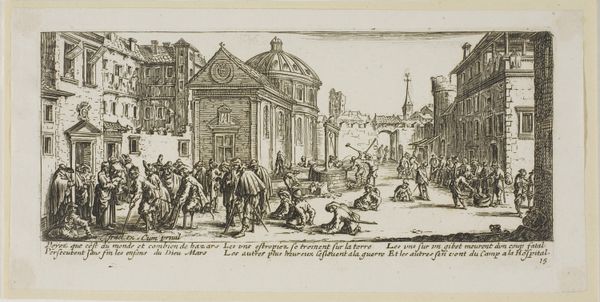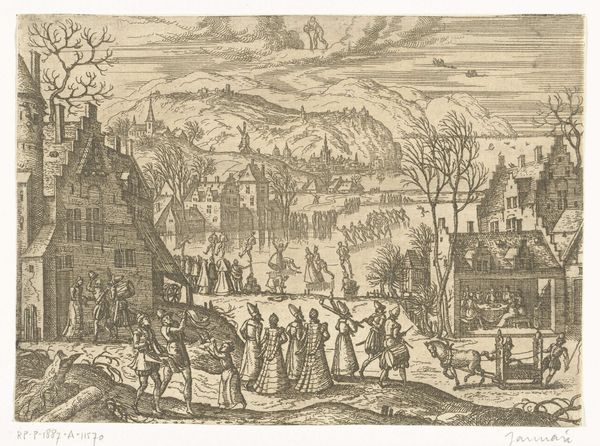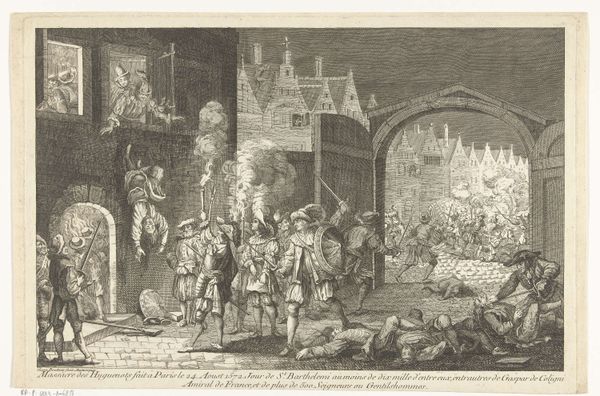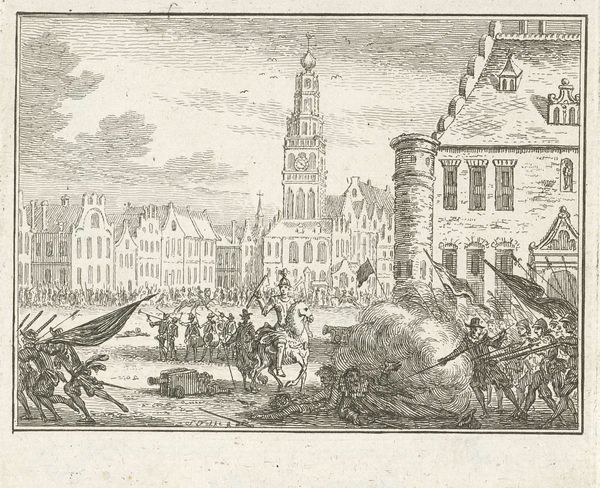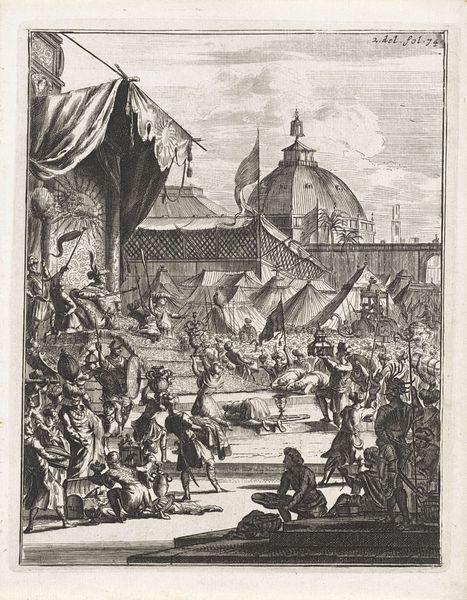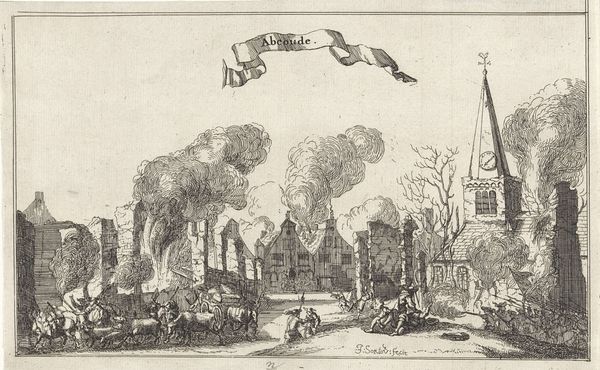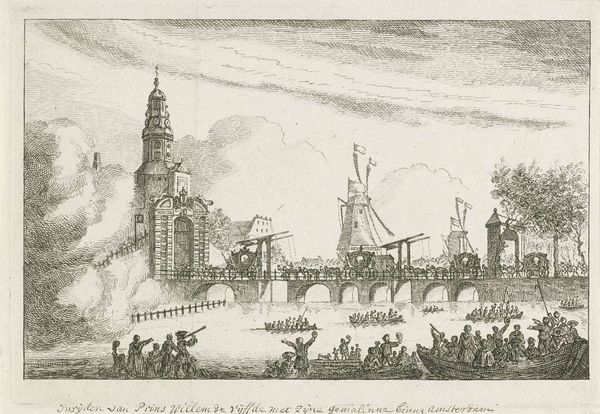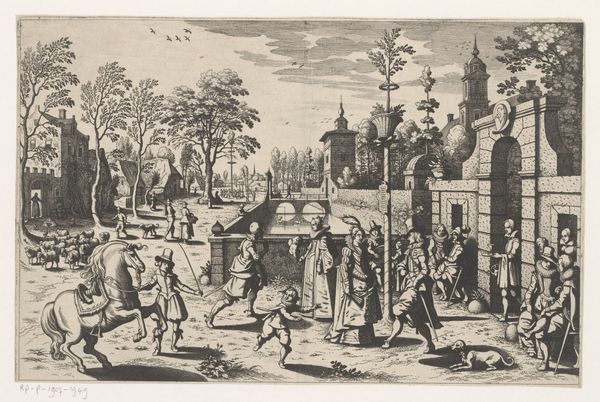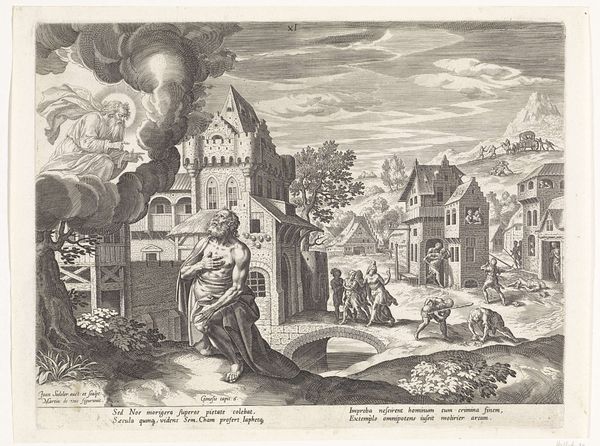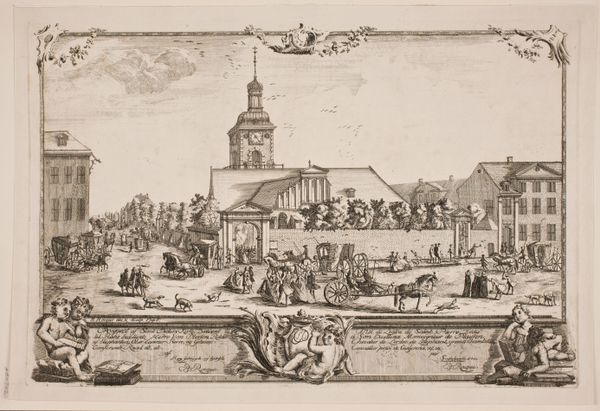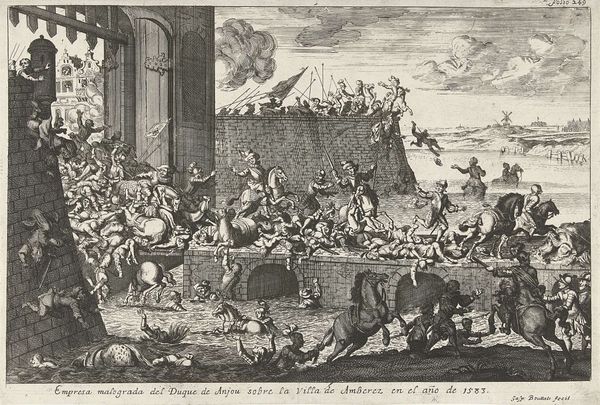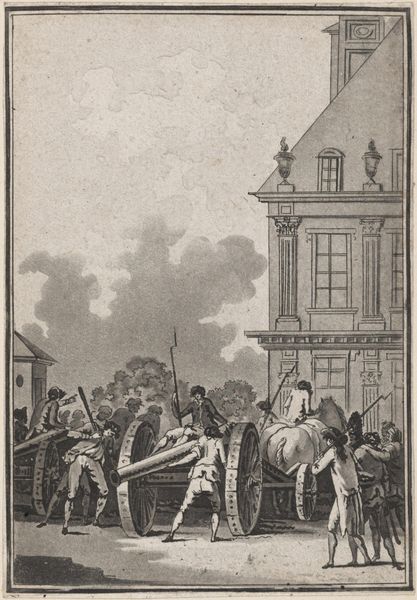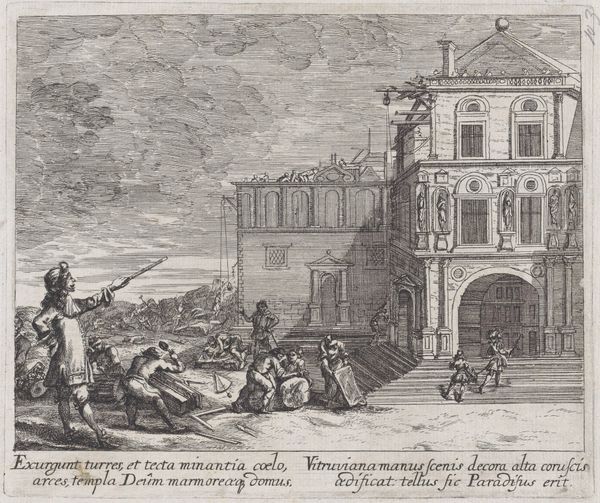
Dimensions: height 85 mm, width 106 mm
Copyright: Rijks Museum: Open Domain
Simon Fokke etched "Executions at Haarlem, 1573" to depict a scene of public execution. The gallows, laden with bodies, dominate the composition, set against the backdrop of a town square teeming with spectators. The image of the hanged body—a motif stretching from antiquity through the Middle Ages and into modernity—serves as a potent symbol of justice, or, in this case, perhaps injustice. Consider how this same image appears in Roman law, medieval morality plays, and even modern revolutionary posters. It represents not just death but also a public spectacle, intended to deter and instill fear. This symbol, fraught with emotional weight, taps into our collective memory of punishment and power. The act of hanging transcends mere physical demise; it embodies a societal ritual, a purging of elements deemed undesirable or threatening. As we gaze upon this etching, we are reminded of how such displays have historically served as a powerful, if brutal, tool of social control, engaging viewers on a deep, subconscious level. We can see how the practice of hanging, as a symbol, has continued to resurface, evolving and taking on new meanings in different historical contexts.
Comments
No comments
Be the first to comment and join the conversation on the ultimate creative platform.

